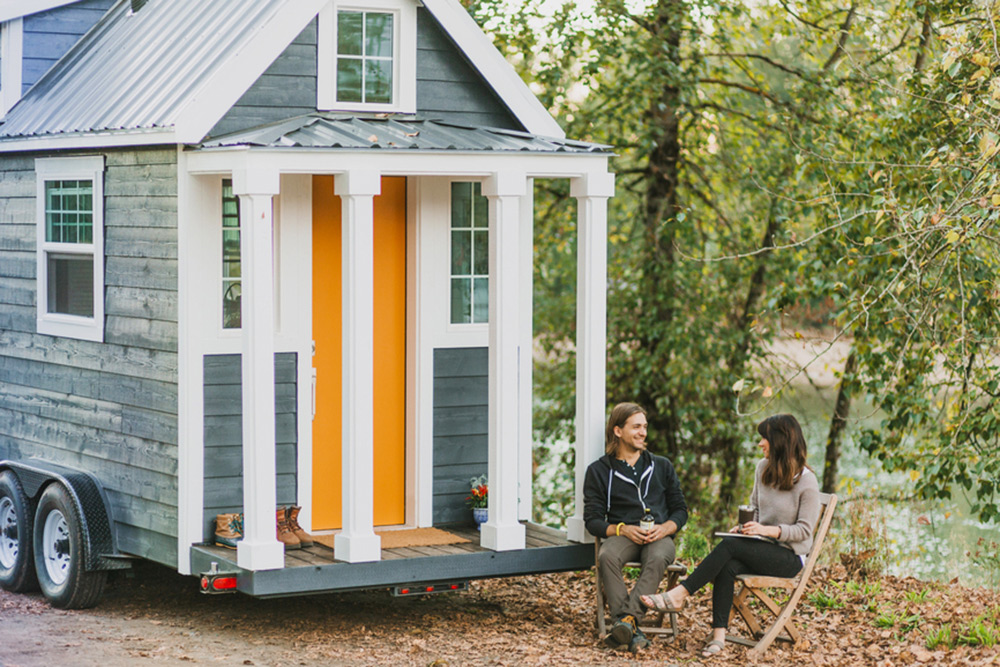Remember that game M.A.S.H.? The one you played as a kid to find out whom you’d marry, what kind of car you’d drive, and whether you’d end up in a Mansion, Apartment, Shack, or House?
Everyone wanted to live in a mansion on the beach with a fast whip, of course, which may help explain why the average American house has ballooned from about 1,500 square feet in the 1970s to more than 2,500 today.
But not everyone thinks bigger is better. Across the U.S., tiny houses — both permanent and mobile, on the grid and off — are becoming popular.
These aren’t the hippie shacks and pop-up campers of yesteryear — they’re design-savvy dwellings that just so happen to be under 1,000 square feet and oftentimes much less. Some major cities have begun to allow supersmall apartments (under 400 square feet).
Think you’re ready to downsize? No need to wait for a game of fortune to live out your dream scenario. You can even nail down whom you’ll marry (always a fun part of M.A.S.H.). No, seriously: the small-space movement has even spawned a tiny dating site.
Once you’ve decided to take the leap, follow the eight tips below to start micromanaging your future tiny life!
1. Prioritize your goals
If going micro appeals to you, the first step is to establish why. Common motives include living more efficiently, debt-free, in better neighborhoods, and generally to have more freedom. (Bonus: These minispaces are a breeze to clean.)
So what’s your reason? Did your dream job come with a pay cut? Want to move to an expensive city? Take time to sort it out; the answer is your foundation for small-size success.
2. Get real about material possessions
Downsizing begins with your stuff, not your home.
“People try to fit their stuff into their space, rather than the other way around,” says David Friedlander, communications director of small-space design consultancy LifeEdited, who lives in a smart 675-square-foot Brooklyn, NY, apartment with his wife and two children. (Check out the photos of his place when it was featured in Dwell.)
You have to be honest regarding “need” versus “want,” including the sentimental stuff. Friedlander, who struggled to let go of family antiques, advises, “You’ve got to pull off the emotional Band-Aid and realize not everything’s coming with you.”
3. Start minimizing now
This is where the going can get tough for newbies. Friedlander recommends starting with the “hamper test.” Go the longest extreme between laundry sessions; whatever’s in the hamper is what you need.
Graham Hill, LifeEdited’s founder, suggests divvying stuff into “yes,” “no,” and “maybe” piles.
“The challenges are the maybes,” he says. “Put those in a box and in six months go back to it. Do you even remember what’s in there? If not, do you really need it?”
For stuff you rarely use, consider eliminating and renting or borrowing when you need it.
4. Harness your inner OCD
Whether they’re off-grid in Austin, mobile in Seattle, or micro in Boston, small-space dwellers all have this in common: they’re super-tidy minimalists.
“There should be a place for everything in your house,” posits Hill. In other words, unless you know exactly where you’re going to store something, don’t plan on indulging in retail therapy.
5. Find double-duty solutions (especially the digital kind)
In small spaces, dual-purpose items are king. A Murphy bed that transforms into a desk or an extendable table is an obvious answer, and elegant options do exist.
Technologically, a single device can perform many tasks — your laptop is an entertainment center, your phone a camera, your hard drive a filing cabinet.
“You don’t have to give up TV,” says Kent Griswold, founder and owner of Tiny House Blog and its print magazine, “but you may have to forgo the surround sound system.”
Try digitizing those photos, CDs, and tax returns. “If you have faith in the cloud,” adds Griswold, who lives in Bend, OR, “you can store all of your photos on a server in the sky and get rid of your paperwork.”
6. Do the math
Let’s face it: most of us fill up our attics and cabinets with stuff that just sits there. How much is that crap-collecting closet costing you?
“In New York, where cost per square foot can be $1,000, it really adds up,” says Friedlander. “You’re paying for that real estate.”
On the flip side, your heating, cooling, and maintenance costs will be much lower in a minispace; plus, you could use those savings to splurge on extra-luxe furnishings, since you won’t need a lot of them.
7. Take a test run
Before diving into the micro lifestyle, try it on for size. “Outline part of your existing house that’s the size of what you’d move into. Is it going to work?” asks Griswold.
Rent a yurt or a tiny house as a trial. “I’ve seen people jump into it — and then go back — because they didn’t really understand what it would be like to go micro.”
8. Be realistic
“It doesn’t have to be black and white,” says Friedlander. “You don’t have to be micro to be downsized.”
If you’re living in a 5,000-square-foot house, maybe a move to 2,000 square feet feels right. You don’t have to make a radical change right away.
“Seven hundred to 1,100 square feet is probably doable for most people,” says Griswold. “Smaller than that is tough.”
Are you ready for microliving? Share your thoughts in the comments


